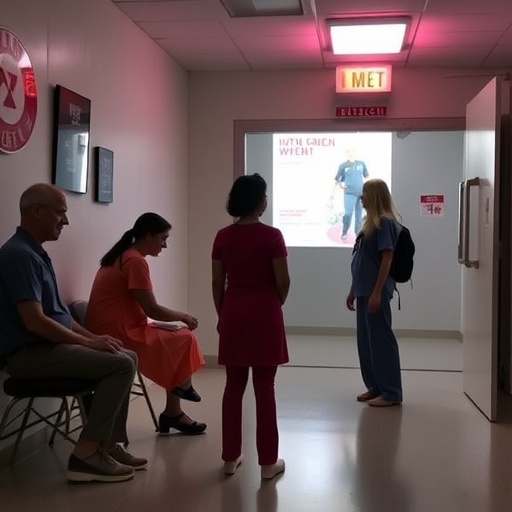May 29, 2018 – Computer-designed, 3D-printed models are emerging as a useful new tool for planning and carrying out cosmetic plastic surgery of the nose, reports a paper in the June issue of Plastic and Reconstructive Surgery®, the official medical journal of the American Society of Plastic Surgeons (ASPS).
Customized, life-sized, 3D-printed, models can provide a useful visual reference in the operating room for plastic surgeons performing rhinoplasty, according to a special "Ideas and Innovations" article by ASPS Member Surgeon Bardia Amirlak, MD, FACS, of University of Texas Southwestern Medical Center in Dallas, and colleagues. They write, "Patient-specific 3D-printed models reflecting the actual 3D anatomy provides additional visual and tactile information to the surgeon, which may contribute to achieving the desired clinical result."
Printed 3D Models Provide Visual Guide for Rhinoplasty
In recent years, digital imaging technology has become widely used in planning many types of plastic and reconstructive surgery procedures. When discussing cosmetic surgery, the ability to create 3D "before and after" images – showing the patient's current appearance and the planned results of surgery – has been a valuable aid to the preoperative consultation between patient and surgeon.
For Dr. Amirlak and colleagues, the growing availability of 3D printing technology provides a logical next step: using 3D digital images to crate printed models of the proposed appearance of the new nose. Once the patient and surgeon agree on the "idealized outcome" of rhinoplasty, the digital images of the patient's current appearance and simulated outcome are converted into 3D-printed models. Full-color models are printed using gypsum powder – providing a more detailed and lifelike appearance than with 3D printing using polymer resin.
In the operating room, the surgeon can refer to the 3D-printed models as a "side-by-side reference," helping to see and appreciate subtle changes occurring during the rhinoplasty procedure. The models help to ensure that the outcomes of cosmetic rhinoplasty are as close as possible to the planned appearance of the patient's nose.
Three-dimensional printed models can also help to improve communication with the patient before surgery, Dr. Amirlak and colleagues have found. They write, "The tactile feedback and ease of visualization from different angles and profiles have complemented the 2D and 3D photographs, making the surgical possibilities and limitations of the procedure easier to understand for the patient." The models take about a week to create, with an average cost of $300.
While 3D printing technology isn't new, it is increasingly available and affordable for a wide range of applications. Three-dimensional printed models have been used for craniofacial and other types of reconstructive surgery, but have received relatively little attention in cosmetic surgery.
Rhinoplasty – sometimes called a "nose job" or nose reshaping – is a common yet challenging procedure for plastic surgeons. It is one of the most frequently performed types of cosmetic surgery. About 219,000 rhinoplasty procedures were performed in the United States in 2017, according to ASPS statistics.
"Given the complexity of rhinoplasty, 3D printing may be a natural fit as part of the surgical care of these patients," Dr. Amirlak and coauthors write. In addition to improving the preoperative consultation process and providing a guide to the surgeon during the procedure, they believe that 3D printing technology "has numerous prospective clinical and research uses in aesthetic surgery."
Plastic and Reconstructive Surgery® is published in the Lippincott portfolio by Wolters Kluwer.
###
Click here to read "Three-Dimensional Printing in Rhinoplasty."
DOI: 10.1097/PRS.0000000000004425
About Plastic and Reconstructive Surgery
For more than 70 years, Plastic and Reconstructive Surgery® (http://www.prsjournal.com/) has been the one consistently excellent reference for every specialist who uses plastic surgery techniques or works in conjunction with a plastic surgeon. The official journal of the American Society of Plastic Surgeons, Plastic and Reconstructive Surgery® brings subscribers up-to-the-minute reports on the latest techniques and follow-up for all areas of plastic and reconstructive surgery, including breast reconstruction, experimental studies, maxillofacial reconstruction, hand and microsurgery, burn repair and cosmetic surgery, as well as news on medico-legal issues.
About ASPS
The American Society of Plastic Surgeons is the largest organization of board-certified plastic surgeons in the world. Representing more than 7,000 physician members, the society is recognized as a leading authority and information source on cosmetic and reconstructive plastic surgery. ASPS comprises more than 94 percent of all board-certified plastic surgeons in the United States. Founded in 1931, the society represents physicians certified by The American Board of Plastic Surgery or The Royal College of Physicians and Surgeons of Canada.
About Wolters Kluwer
Wolters Kluwer is a global leader in professional information, software solutions, and services for the health, tax & accounting, finance, risk & compliance, and legal sectors. We help our customers make critical decisions every day by providing expert solutions that combine deep domain knowledge with specialized technology and services.
Wolters Kluwer, headquartered in the Netherlands, reported 2017 annual revenues of €4.4 billion. The company serves customers in over 180 countries, maintains operations in over 40 countries, and employs approximately 19,000 people worldwide.
Wolters Kluwer Health is a leading global provider of trusted clinical technology and evidence-based solutions that engage clinicians, patients, researchers and students with advanced clinical decision support, learning and research and clinical intelligence. For more information about our solutions, visit http://healthclarity.wolterskluwer.com and follow us on LinkedIn and Twitter @WKHealth.
Media Contact
Connie Hughes
[email protected]
646-674-6348
@WKHealth
http://www.lww.com




